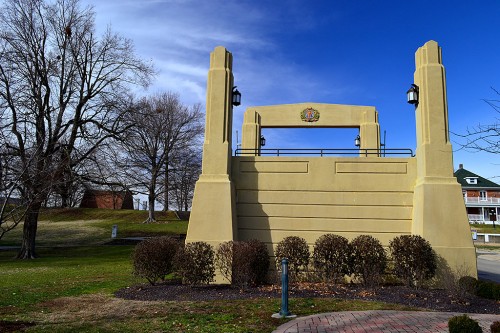 It was appropriate that the first thing and the last thing you would see when you were coming into or leaving Cape by the Mississippi River Traffic Bridge was a religious institution, the St. Vincent’s College, a Catholic Seminary dating back to 1843. I suspect more prayers were said on that bridge than in all the churches in Cape on an Easter Sunday morning.
It was appropriate that the first thing and the last thing you would see when you were coming into or leaving Cape by the Mississippi River Traffic Bridge was a religious institution, the St. Vincent’s College, a Catholic Seminary dating back to 1843. I suspect more prayers were said on that bridge than in all the churches in Cape on an Easter Sunday morning.
The first (or last) things you’d notice when looking at St. Vincents were the magnificent trees on the terrace to the east of the school and the curious brick structure in front of it – the handball court.
Goodbye handball court
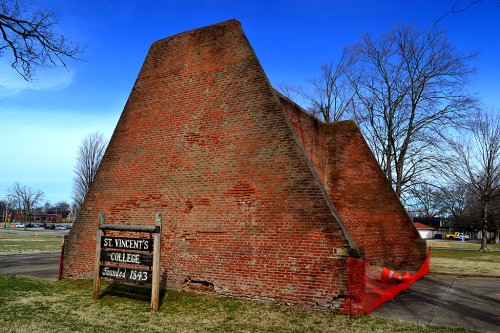 Well, don’t look for the handball court in the future. The Missourian had a story today that dismantling the historic structure began March 12. The court, built in either 1843 or 1853 and possibly the oldest handball court in the country, is being torn apart so the green space where it has lived all these many years can be covered with academic and residential buildings.
Well, don’t look for the handball court in the future. The Missourian had a story today that dismantling the historic structure began March 12. The court, built in either 1843 or 1853 and possibly the oldest handball court in the country, is being torn apart so the green space where it has lived all these many years can be covered with academic and residential buildings.
Goodbye green space
The loss of the brick court is a disgrace. The loss of the open lawn that gave the College buildings its character is a crime. They could have stacked the buildings they are planning on top of the parking lot to the west and maintained the character of the River Campus.
The biggest joke
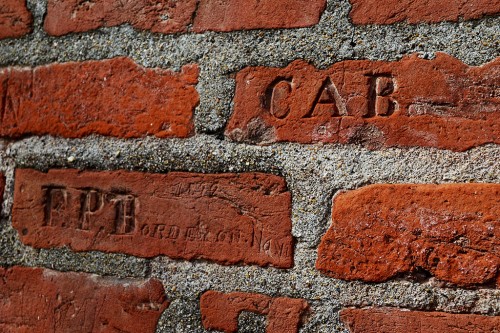 The biggest cruel joke is that the university and planners are going to honor the handball court by preserving “some” of the bricks and incorporating them into the facade of the new building. Follow the link to the Missourian and you can see the care Milam Masonry is taking in “preserving” the bricks. It looks to me like the workers are heaving them off a scaffolding to land in a truck. I doubt there are workers wearing catcher’s mitts standing down there to catch them.
The biggest cruel joke is that the university and planners are going to honor the handball court by preserving “some” of the bricks and incorporating them into the facade of the new building. Follow the link to the Missourian and you can see the care Milam Masonry is taking in “preserving” the bricks. It looks to me like the workers are heaving them off a scaffolding to land in a truck. I doubt there are workers wearing catcher’s mitts standing down there to catch them.
When I made these photographs Feb. 12, 2013, I was astounded at how many had names and dates intricately scratched into them. There were some seminarians with a lot of time on their hands. What was fascinating was the different printing styles the students used over the years.
Did anyone document the bricks?
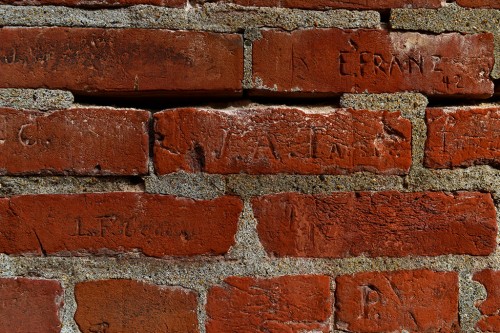 I wonder if anyone took the time to shoot individual closeups of the bricks before the wreckers got there? You’d think a university with an historic preservation program would have been all over that.
I wonder if anyone took the time to shoot individual closeups of the bricks before the wreckers got there? You’d think a university with an historic preservation program would have been all over that.
I shot a few of the bricks, but the lighting wasn’t coming from the best direction to capture detail. The 1920s and the 1940s were well-represented.
When I looked at the ones from the ’40s, I wondered how many of those boys were shipped overseas to fight in World War II and whose only markers are a white cross in a foreign land and a name scrawled on a brick in a handball court that is being torn down.
Will the terraces and trees be next?
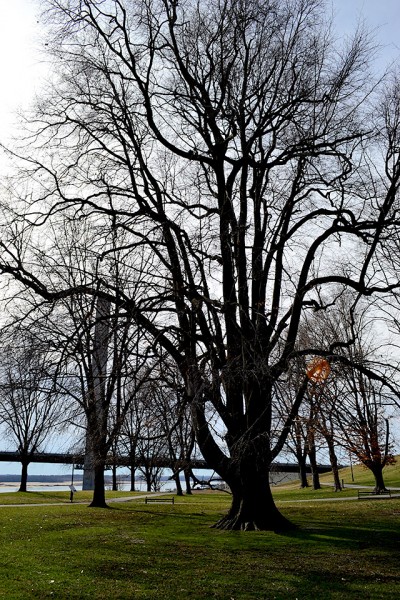 It won’t do any good to cry over spilt bricks. We’ve lost that piece of Cape’s history. Now’s the time to head off turning the terraces and trees into parking lots.See how flat the ground is? Cut down those pesky trees and spread some asphalt and you could fit several hundred cars there.
It won’t do any good to cry over spilt bricks. We’ve lost that piece of Cape’s history. Now’s the time to head off turning the terraces and trees into parking lots.See how flat the ground is? Cut down those pesky trees and spread some asphalt and you could fit several hundred cars there.
I mean, after all, they could “preserve” the trees by turning them into commemorative toothpicks.
Earlier River Campus stories
River Campus celebrates 5th season
SEMO plans to erase Cape landmark
Photo gallery of handball court
Some day, someone doing research may come looking for photos of what Cape Girardeau looked like before Southeast Missouri State University bulldozed it. Click on any photo to make it larger, then click on the left or right side of the image to move through the gallery.

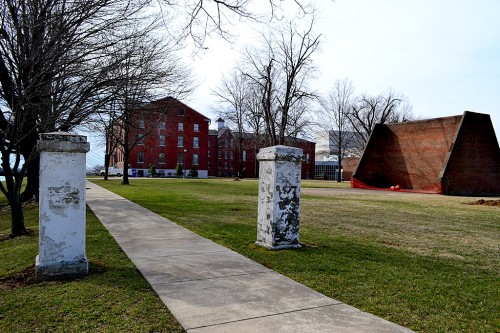
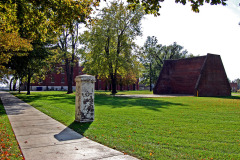
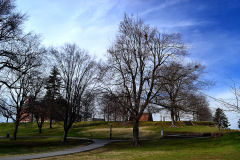
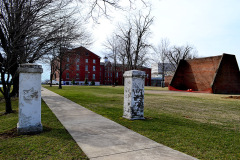
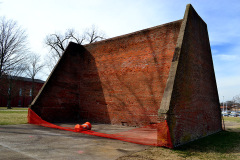
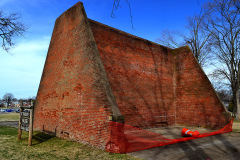
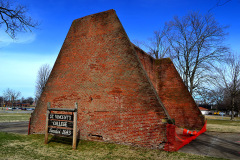
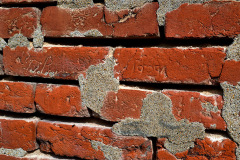
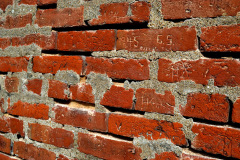
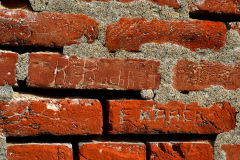
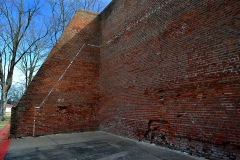
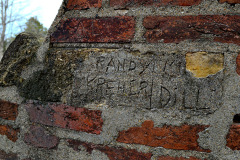
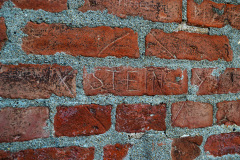
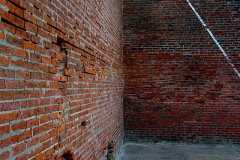
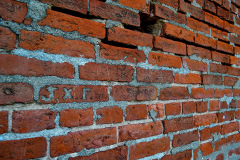
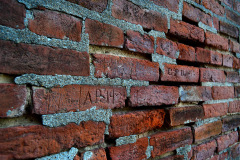
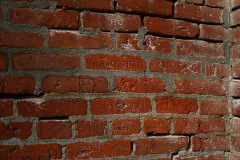
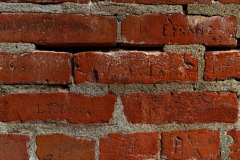
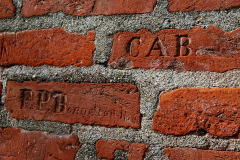
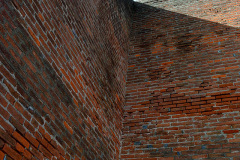
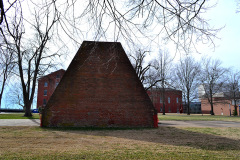
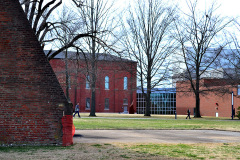
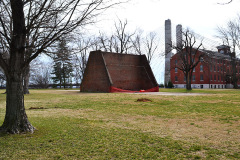
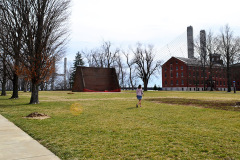
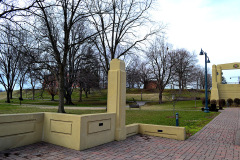
Gosh Ken, why don’t you tell us how you feel? This post shows more than any other how connected you are to your home town, how much love is in you for the place. I’m not one to have attachments to physical things, or even to history, but I respect it in you, and I understand the depth of your feelings. I hope others in the Cape will join you in raising their voices about the things they care about. The Cape will never be a St. Louis, so why not preserve its past, and use that as a draw. It’s a lovely town, with lots of potential, much of it already realized, but with a future to preserve. Note I said future, not past. Preserving a sense of history is a great goal for the city. Again, lovely place, one we hope to visit again. Save it for us.
I have said it before in regards to one of your posts about Cape preserving history by tearing it down, and it seems appropriate to say it again…
“They paved paradise to put up a parking lot”
-Joni Mitchell, Big Yellow Taxi
Oh well.
That was such an icon for Cape. The way the bricks were thrown around I doubt if many will be useable. Such a sad day. You are right with the Big Yellow Taxi reference. Seems to be happening alot more now. Maybe we are getting older and appreciate our history more. Everybody take as many pictures as you can.
I guess the regents forgot who paid for the River Campus through the hotel and restaurant tax, and the city officials who collected it were not interested enough to remind them.
The tax is up for renewal next year. Perhaps this will serve as a reminder to the voters of the unintended consequences of filling bureaucrats’ pockets with cash.
Last year it was “Remember Bloomfield Road”, what will it be in 2014.
Just a question, was St. Vincent’s not an Historic Site? Are there any in Cape?
That’s an excellent point. Here’s a link to a story about how folks who dine out and have stayed in Cape hotels have nearly paid off $9 million in bonds used to build the campus.
Let’s starve the beast.
All the more reason why–when I get that alumni letter asking for donations–I send it soaring into File #13.
I hope you’re wrong about the University’s plans for the trees and green spaces of the River Campus, Ken. It’ll be a sad day if they completely destroy the character of the old terrace.
It sounds as if Cape voters need to rethink a decision to renew the hotel and restaurant tax. Why give them all that money, if they’re going to go around destroying the history of that beautiful city?
although I am with you on the historic preservation idea, as I work at the river campus (not for long though, a whole different story) I can assure you that they are dismantling the handball court with care and are excavating them brick by brick and storing them neatly on some sort of gated rack thing….I will take a couple pictures this afternoon and send them to you. It is a sad thing that they are taking it down. there is no doubt the buildings they are putting up, are necessary, I’m just not sure the handball court needs to be sacrificed for it. What about the other side of the street where there is nothing? Just a thought.
It depends on what you define a “historic site.” I’m using the definition of being listed on the National Register of Historic Places. A quick wiki states there are around 41 historic sites and 11 historic districts. http://en.wikipedia.org/wiki/National_Register_of_Historic_Places_listings_in_Cape_Girardeau_County,_Missouri
The college building is listed but unfortunately the court was not listed although the St.Vincent building itself is. Other sites not listed that are historic in nature are the old Fire House (where the Cape River Heritage Museum is located) and Fort D.
My family owened the Texaco station (Carls Texaco) next to ST. Vincents. We used to gas up their buses and personal cars. I trained my dobie, thor on the grounds. Father Bagetto would come out and watch but he was a little apprehensive about thor. Dad and I would sit on the benches under those trees and watch the barges on the river after we closed for the day once in a while. I remember Father Bagetto coming over to talk to us and to get fresh tomatoes dad always grew in our little garden on the east side of the station. Alot of good memories. Thanks Ken for keeping the memories alive. If not for you alot of us would lose touch with our past. In your posts I have seen places where I played, worked, and grew up. Thanks.
Well said – in image and words! Very unfortunate.
Okay, we can’t cry over “spilt” bricks….let’s prevent something like this from happening again! Since I no longer live in Cape I have questions….
Is there a county Historical Society which has oversight of historical sites?
Who at the university makes this kind of decision? Who are the folks on the University Board? Are they not locals? Who appoints these folks? Who has influence?
Perhaps it’s time that someone steps forward to lead/unite/give voice to the folks who care!
My grandfather, Clyde Vandivort, attended St. Vincent’s for his high school years. This, coupled with the destruction of the Frizel-welling house in Jackson, breaks my heart. I’m glad he isn’t alive to see these travesties.
This just in:
I posted the latest image of the handball court demolition to the Southeast Missourian link above.
It’s half gone now as of 1 p.m. Wednesday.
well i was told wrong…imagine that…they are indeed throwing them into a back of a dump truck…not sure how that is going to “salvage” many
The only historical society that I know of in the area is the Historical Association of Greater Cape Girardeau. Their focus is almost entirely on the care and maintenance of the Glenn House and I have never heard of them advocating in any major fashion for other historic buildings/sites (as far as I know.). There is a history museum not associated with the university known as the Cap Riber Heritage musem but they are not focused on historic sites either (and to be air, that’s not something I’d expect from them.). There is a Historic Preservation Commission (http://www.cityofcapegirardeau.org/CityHall/Historic-Preservation-Commission.aspx) that has just started to create a list of endangered historic sites in the area. The handball court was not on it.
If we dont watchout they will tear down all of downtown. If they got their hands on the kfvs building it would be next. Come on people save some of downtown for the next generation…..
This is sad. It seems that Cape is suffering from a self-inflicted identity crisis. For starters, there’s no unified effort to preserve the history around town. I would like to see our fine city promote the thousands of tales through a historical society and a visitors bureau…but not just the city – the area. Old McKendree Chapel is an example where I tried to get information about it from the CVB and they were not aware that it existed. The lore from the “thousand tales” is going to fade away just like the roses over time. Alot of stories, many shrouded in mystery, some true, some not so true can be told. But those stories lose something everytime a decision like this is made.
Sad, sad day for Cape. Strolling around the River Campus and the surrounding neighborhood will never look, feel and be the same–the graceful,handsome handball court lost forever, along with a sense of peace, respect and pride. The wide open lawn, tumbling terraces and elegant, tranquil elms are all indeed as fragile and expendable as it was. What, instead, will the view be to gaze and reflect upon, once the new buildings emerge and additional progress is had…what else will be lost?
Innocence: I am only stepping on your face because it lies in my path.
-Mason Cooley
Just another one of Cape’s treasures lost to “progress”. What can be expected from a town that tore down the hotel where General Grant lived and had his headquarters to build a Sterling dime store?
When Bill Harrison donated the money needed to purchase the seminary property many promises were made to him regarding the property and his home located across the street on Lorimier. One promise was that the handball court would be preserved!! He spoke of this often when we visited. Once Bill passed on many of the promises made to him were broken….the handball court only one of the many. I thought this was in writing…guess I was wrong.
This was a sad turn of events for Cape Girardeau. MONEY is the driving factor in all these decisions. What a shame!! Lynn Beaudean Hoffman
Supposedly, this is called progress!! No one seems to care about nostalgia anymore. It doesn’t make money!!!